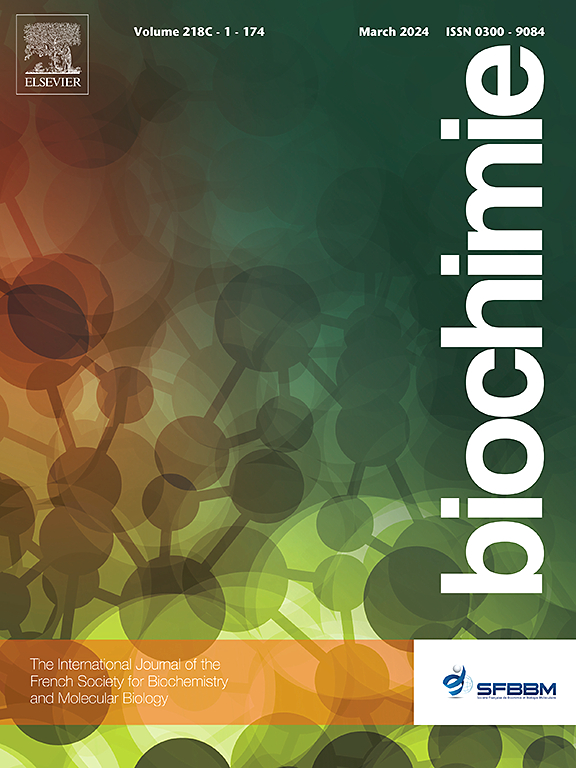PA28γ, the ring that makes tumors invisible to the immune system?
IF 3.3
3区 生物学
Q2 BIOCHEMISTRY & MOLECULAR BIOLOGY
引用次数: 0
Abstract
PA28γ is a proteasomal interactor whose main and most known function is to stimulate the hydrolytic activity of the 20 S proteasome independently of ubiquitin and ATP. Unlike its two paralogues, PA28α and PA28β, PA28γ is largely present in the nuclear compartment and plays pivotal functions in important pathways such as cellular division, apoptosis, neoplastic transformation, chromatin structure and organization, fertility, lipid metabolism, and DNA repair mechanisms. Although it is known that a substantial fraction of PA28γ is found in the cell in a free form (i.e. not associated with 20 S), almost all of the studies so far have focused on its ability to modulate proteasomal enzymatic activities. In this respect, the ability of PA28γ to strongly stimulate degradation of proteins, especially if intrinsically disordered and therefore devoid of three-dimensional tightly folded structure, appears to be the main molecular mechanism underlying its multiple biological effects. Initial studies, conducted more than 20 years ago, came to the conclusion that among the many biological functions of PA28γ, the immunological ones were rather limited and circumscribed. In this review, we focus on recent evidence showing that PA28γ fulfills significant functions in cell-mediated acquired immunity, with a particular role in attenuating MHC class I antigen presentation, especially in relation to neoplastic transformation and autoimmune diseases.
PA28γ,能让免疫系统看不见肿瘤的环?
PA28γ 是一种蛋白酶体互作因子,其最主要和最已知的功能是在泛素和 ATP 之外刺激 20 S 蛋白酶体的水解活性。与 PA28α 和 PA28β 这两个类似物不同,PA28γ 主要存在于核区,在细胞分裂、细胞凋亡、肿瘤转化、染色质结构和组织、生育、脂质代谢和 DNA 修复机制等重要途径中发挥着关键作用。尽管已知 PA28γ 有很大一部分是以游离形式(即不与 20 S 结合)存在于细胞中,但迄今为止几乎所有的研究都集中在其调节蛋白酶体酶活性的能力上。在这方面,PA28γ 强烈刺激蛋白质降解的能力似乎是其多种生物效应的主要分子机制,尤其是在蛋白质内在无序因而缺乏三维紧密折叠结构的情况下。20 多年前进行的初步研究得出的结论是,在 PA28γ 的众多生物学功能中,免疫学功能是相当有限和局限的。在这篇综述中,我们将重点讨论最近的证据,这些证据表明 PA28γ 在细胞介导的获得性免疫中发挥着重要功能,尤其是在减弱 MHC I 类抗原呈递方面,特别是在肿瘤转化和自身免疫性疾病方面。
本文章由计算机程序翻译,如有差异,请以英文原文为准。
求助全文
约1分钟内获得全文
求助全文
来源期刊

Biochimie
生物-生化与分子生物学
CiteScore
7.20
自引率
2.60%
发文量
219
审稿时长
40 days
期刊介绍:
Biochimie publishes original research articles, short communications, review articles, graphical reviews, mini-reviews, and hypotheses in the broad areas of biology, including biochemistry, enzymology, molecular and cell biology, metabolic regulation, genetics, immunology, microbiology, structural biology, genomics, proteomics, and molecular mechanisms of disease. Biochimie publishes exclusively in English.
Articles are subject to peer review, and must satisfy the requirements of originality, high scientific integrity and general interest to a broad range of readers. Submissions that are judged to be of sound scientific and technical quality but do not fully satisfy the requirements for publication in Biochimie may benefit from a transfer service to a more suitable journal within the same subject area.
 求助内容:
求助内容: 应助结果提醒方式:
应助结果提醒方式:


